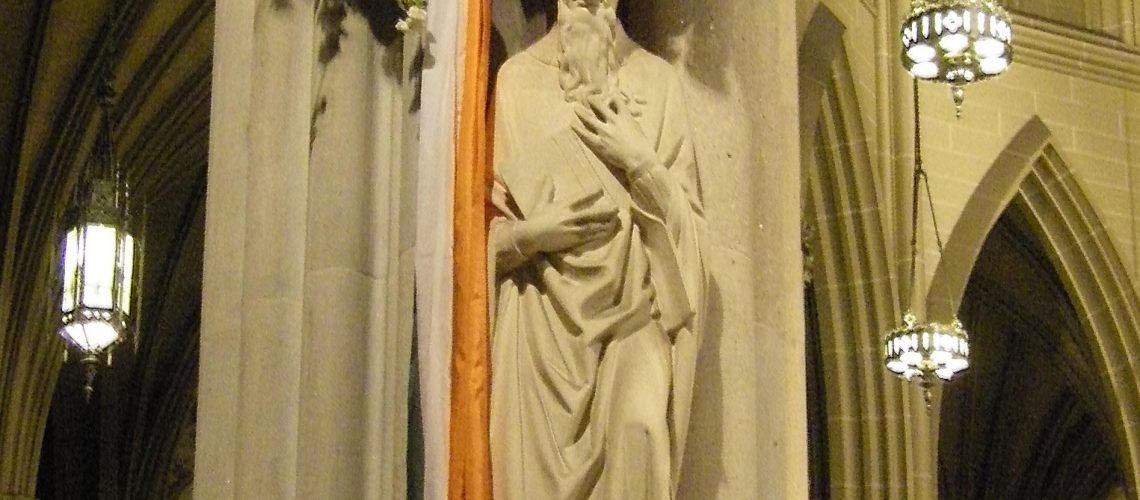Practicing an early form of multiculturalism in the medieval fifth century, St. Patrick is often considered more of an Apostle than a saint. Imprisoned in Ireland as a teen, he escaped slavery but came back as a missionary to turn the druids’ tripartite paganism on its head. He used the ubiquitous Irish shamrock as a metaphor for the Christian Trinity, three persons comprising a single God, and co-opted their devotion to the color green, giving up his sky blue for the druids’ favorite color of the Irish landscape.
He baptized Irish across all social strata and his refusal to accept gifts from kings endeared him to the common folk. He was held captive and abused on other occasions marking a life traveled along a painful path. While there were probably never any snakes to banish from Ireland, Patrick’s influence on the nation that enslaved him goes beyond making his former captors Christian.
More than a millennium after he lived, the color green and other staples of Irish folk lore were banished from Patrick’s adopted homeland by the British king. Many Irish nationalists escaped to the new world where they could practice their customs in peace. The early waves settled the Appalachian Mountains before their countrymen followed in subsequent centuries, making their mark upon America’s major cities.
The luck of the Irish blessed the beginning of the Revolutionary War when George Washington enjoyed his first major victory forcing British Commander William Howe to evacuate his troops from Boston on March 17, 1776. He appointed John Sullivan as officer of the day and made “Saint Patrick” the password. Washington had a special fondness for the land where nine of his closest generals were born.
By that time, Irish soldiers in the British Army had been leading New York City’s St Patrick’s Day parade for about a decade. Perhaps irked by New York’s loyalist leanings, Washington gave his army the only holiday of the entire war on March 17, 1780 “as an act of solidarity with the Irish in their fight for independence.” His proclamation included the stern instructions “that the celebration of the day will not be attended with the least rioting or disorder.” It was a great morale booster for the Continental Army, almost a third of whom were of Irish descent. After Britain lost the war, it was accepted that the Irish immigrants made the difference.
The Irish contribution to American military history only grew from there. With rebellion brewing at home, Irish revolutionaries in New York City formed militias in preparation to free their homeland from British rule. The First Irish Regiment was the precursor to the 69th Infantry Regiment of the New York Army National Guard that proved pivotal in the Civil War. Since 1851 they have led every St. Patrick’s Day Parade as the Grand Marshal kicks off the festivities by asking “Is the 69th Ready?” They answer, “The 69th is always ready!”
They were ready at Antietam, Fredericksburg and Gettysburg where Confederate General Robert E. Lee named them The Fighting 69th. Their chaplain at Gettysburg, Fr. William Corby, took the Fighting Irish moniker with him to South Bend, Indiana when he became the third president of the University of Notre Dame. The regiment brought more distinction upon itself wearing sprigs of boxwood (tougher and greener than shamrocks) in their helmets during World Wars I and II, Iraq, and Afghanistan.
For only the second time in over 250 years, there will not be a St Patrick’s Day Parade in New York City. 5th Avenue will not rise to meet the Fighting 69th marching to the Garryowen with their wolfhounds. Nor will the sun shine upon the faces of 150,000 marchers representing Irish counties and culture across the social spectrum. Cardinal Dolan will not be on the steps of St Patrick’s Cathedral reviewing the classic New York City celebration of Irish heritage and the dawn of spring. We can only hope the leprechauns don’t scuttle too many other annual traditions with a second year of bad luck. Parade or not, we are still all Irish today, and may God hold us all in the palm of his hand.
Happy St. Patrick’s Day!

